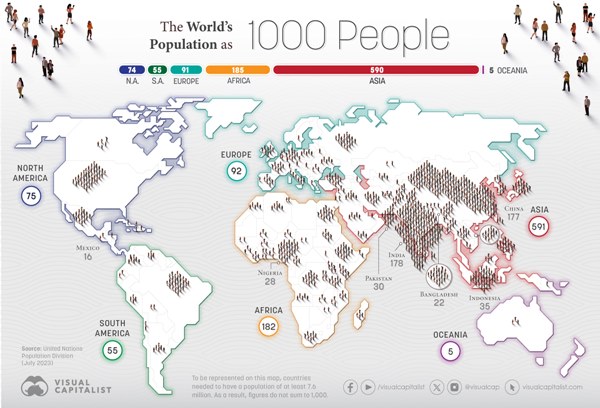The world’s population has doubled in size over the last 50 years.
In 2022, we reached the mark of 8 billion living on Earth. According to UN estimates, by July 2023, all the people in the world numbered 8,045,311,447.

In this interactive map, we use population estimates from the United Nations Population Division to illustrate the world’s population as if the Earth had only 1,000 people. Countries with a population of below 7.6 million did not make our cut off to be visualized, but are included in overall calculations and listed below.
Africa is the second most populated continent with 182 out of 1,000 people, led by Nigeria (28), Ethiopia (16) and Egypt (14). As of July 2023, Africa’s total population stood at an estimated 1.5 billion people.
Despite seeing a decline in population over the last decades, Europe still is the third in terms of total population, making up 92 out of 1,000 people and led by Russia (18), Turkey (11), and Germany (10).
If the world only had 1,000 people, North America would have only 75 inhabitants, with 42 in the United States. Meanwhile, South America would account for 55 people led by 27 from Brazil, and Oceania would have just 5 people (with 3 in Australia).












